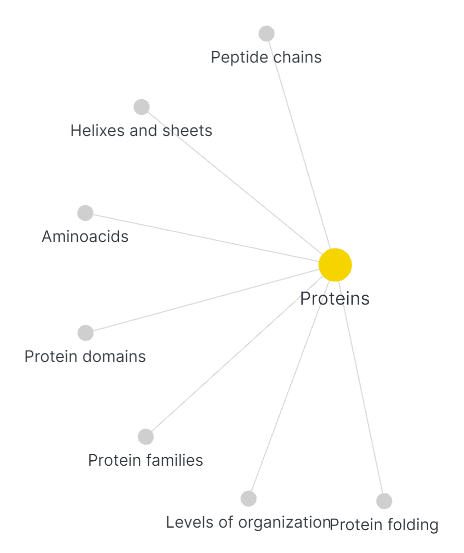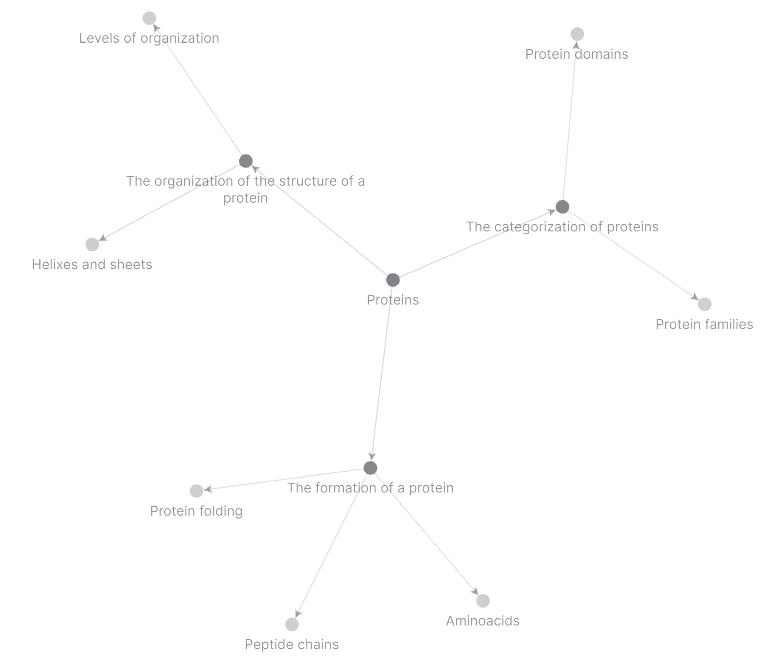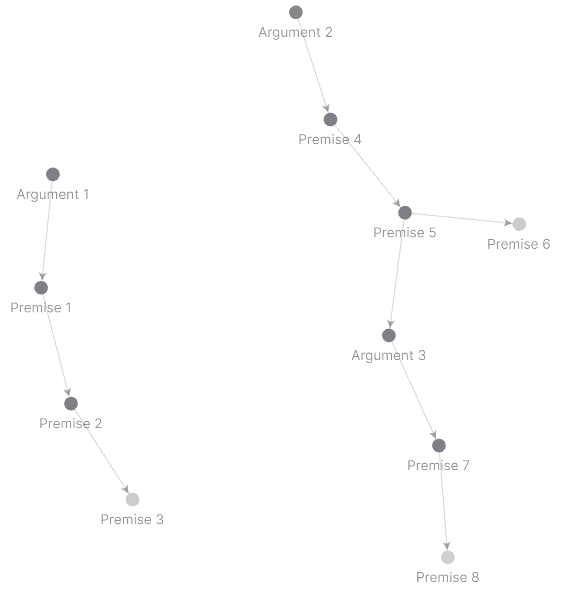How should my first notes be laid out?
Greetings, sorry for this long post, but I feel I need to provide full context to better explain myself.
After several weeks of deliberation (and lots of reading on the Internet), I finally decided to start my very own Zettelkasten. However, right from the beginning, I'm having trouble deciding how I should lay out my notes in better accordance to the ZK method. I was hoping somebody in this forum would be kind enough to provide some guidance.
So here's the complete scenario: I'm using Obsidian as my ZK platform and I decided to start by transferring some of my old notes into zettels. These particular notes are just a summary of a single chapter of an introductory book about cell biology. I guess one could say that these are literature notes or bibliographic notes, since they do not contain any original idea of my own.
Regardless, from these notes I identified the following key topics (provided merely for context; these would not be the actual titles for the zettels):
- What's a protein
- What are aminoacids
- How aminoacids connect together to form a peptide chain
- How a peptide chain folds into a protein as a consequence of certain inter-residue physical interactions
- The two basic structures into which the peptide chain folds (helixes and sheets)
- How the structure of a protein is studied from several levels of detail
- etc.
As I'm trying to come up with a way to divide these notes into zettels, I realized that there are several different ways to do this and I can't decide which is the most appropriate for the ZK method.
For instance, I could simply create a structure note titled "Proteins" and list all the topics as "child zettels". This would look something like this:
# Proteins Proteins are biological molecules that blablabla... - The formation of a protein - [[Aminoacids]] - [[Peptide chains]] - [[Protein folding]] - The organization of the structure of a protein - [[Helixes and sheets]] - [[Levels of organization]] - The categorization of proteins - [[Protein domains]] - [[Protein families]] - ...
The graph view of this layout would look like a single node that has several children nodes simultaneously connected to it. 
A different way to implement this would be to further divide the top-level topics into additional structure notes, each containing links to the zettels that contain the corresponding low-level topics. In this case the graph would look very similar --as a tree of two levels.
The problem I see with this layout is that it's really imposing a hierarchy according to the topics covered. This is unsurprising since, as I mentioned, the original notes are a summary of a book, so the topics would appear in the same order as in the original book. However, it is my understanding that such hierarchies should be avoided in the ZK method. It is also my understanding that the ZK should be more about constructing arguments or discourses (or "trains of thought", as some people call them). This is the fundamental idea behind the Folgezettel; each sequence of notes represents the premises of an argument, but with the addition that any certain premise can branch-off into a new argument. In a graph view, the ZK with FZ would look more like a tree (if we're not accounting for links between zettels of different discourses) and a single discourse would look like a linear path.
If my understanding is correct, then the above structure note does not properly reflect what the discourse is, neither does its corresponding graph view. So I thought of an alternative way to layout my notes by rewriting the structure note more in the style of an "introduction note" that would look something like this (links do not represent the actual titles of the linked zettels, I'm just too lazy to write made-up UIDs):
# Proteins Proteins are biological molecules that blablabla... Proteins are made of [[aminoacids]] which can be linked together to form [[peptide chains]]. Through a chemical process called [[folding]], these chains form proteins. [[Helixes and sheets]] are the two basic structures that can be formed within a protein as a result of the folding process. Thus, the structure of a protein can be studied using different [[levels of organization]]. Proteins can also be categorized into [[domains]], depending on their structure and function, or into [[families]], depending on their evolutional history. ...
I much prefer this way since the following things can be inferred from the content: what is the general discourse that begins from this zettel, how this zettel relates to others, which zettels are contained by this structure note, and what is the order in which the linked zettels should be read.
However, there is still one problem left: navigation. The graph view of this layout would be identical (in structure) to that of the first image shown --a single node connected to several child nodes. But, at the same time, the content of the zettel suggests that the notes should be read following a linear path. So, in this sense, the graph view does not reflect the order in which the ideas are actually connected.
Also, if I were to read these zettels following the intended order, I would have to go back to this "introduction card" every time I want to move on to the next zettel in the sequence. At first glance, this problem can be remediated by adding, at each zettel, a link to the next one. However, if this is done, I'm not sure what the introduction note would look like or if it's even needed anymore. Also, another problem can potentially raise in the future, where a certain zettel, which is already part of a discourse, branches-off to a different discourse. A similar problem occurs when two different discourses make use of the same zettel as a premise (but the discourses do not join together). In both problems, the following question would arise: how could a zettel be linked to the next one if it is participating in multiple discourses?
So, the bottom-line is this: given the examples I've shown and the problems that (I think) arise for each of them, is any of them the correct way to layout my notes or are they both wrong? What is it about the ZK method that I'm not understanding correctly? Is it the case that I find it difficult to create my ZK because my first notes cannot or should not actually be transformed into zettels (since they're just a summary of a book)?
Howdy, Stranger!

Comments
@caom92 Welcome to the forum!
First off, I'd like to ask: Why Folgezettel? I don't have an argument for or against it, but unless you have a reason for it, I'd like to point out that there's also the time-based ID. Another question: Did you look at the posts from the overview? I think that most of your questions have answers there.
If you're coming from Sönke, I don't think they meant those note types as actual notes, but rather as a way for you to understand the building blocks. Besides, a Zettel is a Zettel. So, you may be better off dropping those categories.
I believe this has answers here:
You talk about using the graph view to see Folgezettel. Doesn't the graph view show how notes are connected by links? You may want to try this out instead: https://forum.zettelkasten.de/discussion/976/the-case-for-a-digital-folgezettel/p1
...With links?
Anything can be a Zettel, although it doesn't hurt to define what you want to put in Zettels.
To complete @Annabella message, I will add some points :
What I would do (I am not an expert, but I hope to gives you ideas):
And I would make an other note, like here : (sorry, my biology studies are quite far away in my memories)
And so on.
What matters is what matters to you for your learning. Don't worry
I'd like to thank both of you for answering to my post. I think the answer provided by @Loni most appropriately addressed the issues I was having, though I still need to try her/his suggestions out myself.
Reading back my post I realized my issues where not explained clearly enough so I'll try to reformulate them just for future reference, or in case somebody wants to give further input.
My first issue is related to structure notes. I understand I can always create a new structure note every time I want to begin a new "train of thought". The issue I was having with this use of structure notes was that I was not convinced this was an effective use of the ZK method, or Obsidian for that matter. Why not? Because, what structure notes basically do is put a bunch of zettels into a single "group" or "box", not much different from what tags do, for that matter.
This is a problem because I'd like the graph view to show the flow of information; i.e., the order in which I need to read the zettels to study a certain topic. By relying on structure notes to record each train of thought, the resulting graph view would rather just show me to which "group" or "box" each zettel belongs; it would not show me how train of thoughts flow within the ZK. Maybe I'm having unrealistic expectations here about how I want to use the ZK method and/or Obsidian and, if this is the case, I'd be grateful if somebody can explain me what is it I'm misunderstanding.
The other issue I mentioned in my original post was really more about ergonomics. By using structure notes as described in the paragraph above, I'd have to go back and check the structure note everytime I'm reading the zettels that compose a certain train of thought. If I were to use Folgezettel (not that I'm planning on using it), all the cards concerning a single train of thought would be linked one after the other. This way, I'd just have to click a button called "next" when I'm
done reading a card in order to move on to the next one. However, in Obsidian, since every zettel can have multiple connections (and, thus, belong to multiple trains of thought), I don't think it's possible to implement this sort of navigation. So, this issue solved by itself, I guess?
Edit: I just realized the second issue can be solved (somewhat) by using @Loni's suggestion; i.e., by adding a footnote to each zettel that link to the next one, depending on the certain topic (train of thought) one wants to know about.
Hi @caom92 ! I'm a bit late to answer to you, I did'nt see your answer and I am sorry.
Do you find something useful for you since yet ?
I'd like to come back to that :
Structure notes are more than a box
Structure notes can be used for a loooot of things, not only to a box. While tags does not give context, hiearchie, explanations, a structure note can do whatever you want it to do. You can mix notes which don't come from the original stream, you can make indented bullet, you can add indications, pictures and whatever you like.
Here an example :
As you can see, you can create relationship between hose structures notes, creates other stream of thoughts, organised them. It is not a tag.
The graph is a helper, not an end
I understand your appeal for the graph feature. But it is a tool, you should'nt redact your notes for the graph.
While your Zettelkasten will grow, you'll see more and more connexion between notes and structures notes. It will not renders one stream of thoughts, but many possibles streams of thoughts at the same time.
If you want to remember order reading, structure notes would be muuuuch more helpful with handwritten notes and all.
What would be helpful to you are mindmaps and diagrams. I am not an expert on this topics but I know that Obsidian has plugins to create diagrams that you would set yourself without depending on a machine driven automatical logical tool.
For example, @Sascha conceives this kind of diagrams :
@Edmund does this kind of synthesic presentation :
And @ZettelDistraction draws this kind of drawings :
The deliberate approach will always carry much value for understanding a topic than an automatical process.
I hope it helps
You will find that people use structure notes in a lot of different ways. Some really like them and are quite innovative in their use. @Loni has summarized some of those.
I use structure notes only sparingly and I never start with a structure note and then add zettels (which is a common practise for others). Rather, I enter zettels as they occur to me or as I want to work on different ideas, i.e., in a somewhat haphazard manner. The trick, for me, is to make sure that I connect each zettel to as many others as I can in my ZK, as soon as I can (i.e., within a few days or perhaps a week). And then I regularly maintain my ZK by reviewing connections between zettels.
If some structure starts to reveal itself, then I may create a structure note as a mean of entering a particular 'idea web", by referencing several zettels in the web that make sense (as entry points). Not sure if I'm explaining this clearly, but my practise, as it has evolved over the last couple of years, is a bit different than how others use structure notes. My approach is not unique but I see it described less often that other approaches.